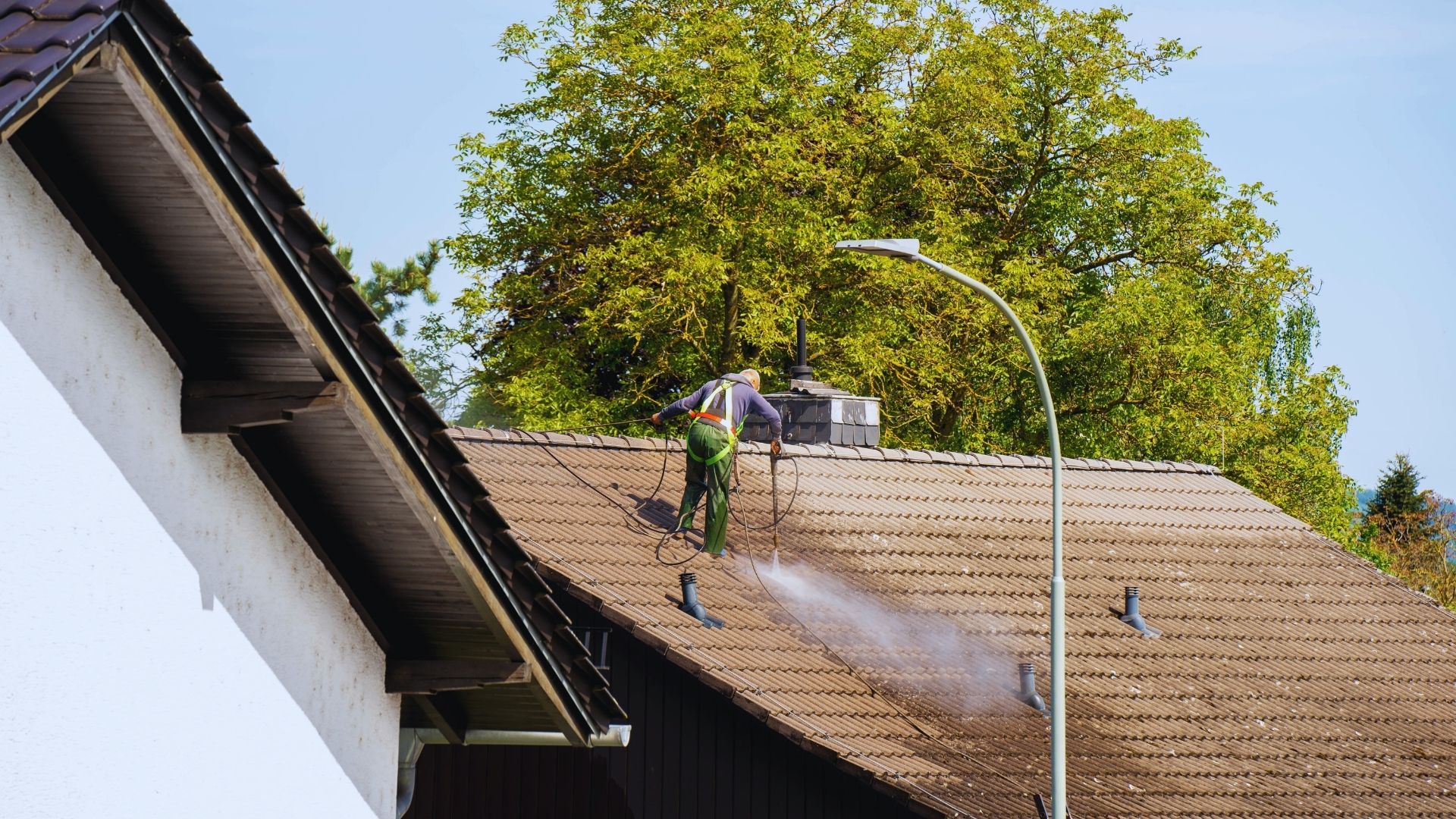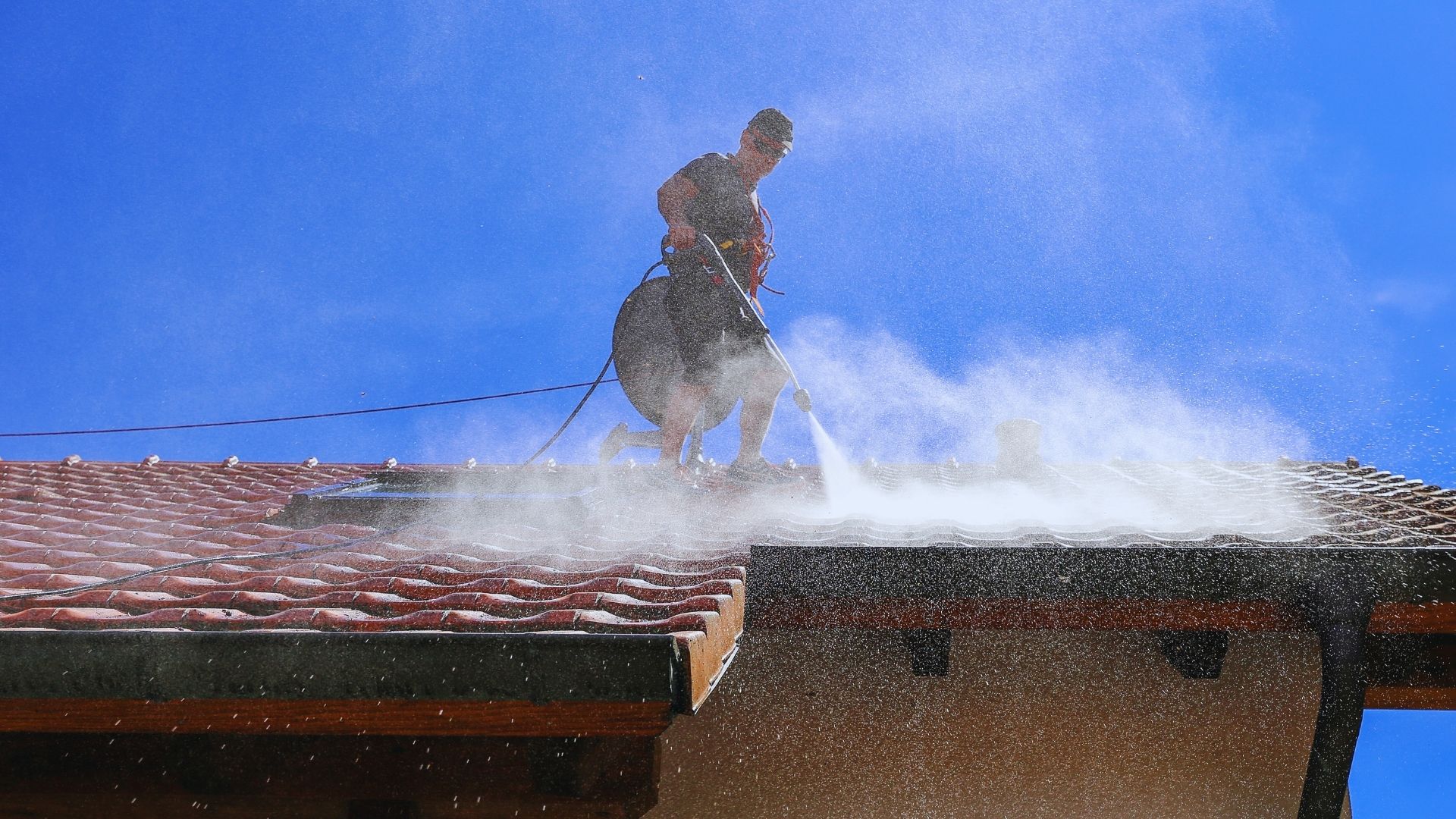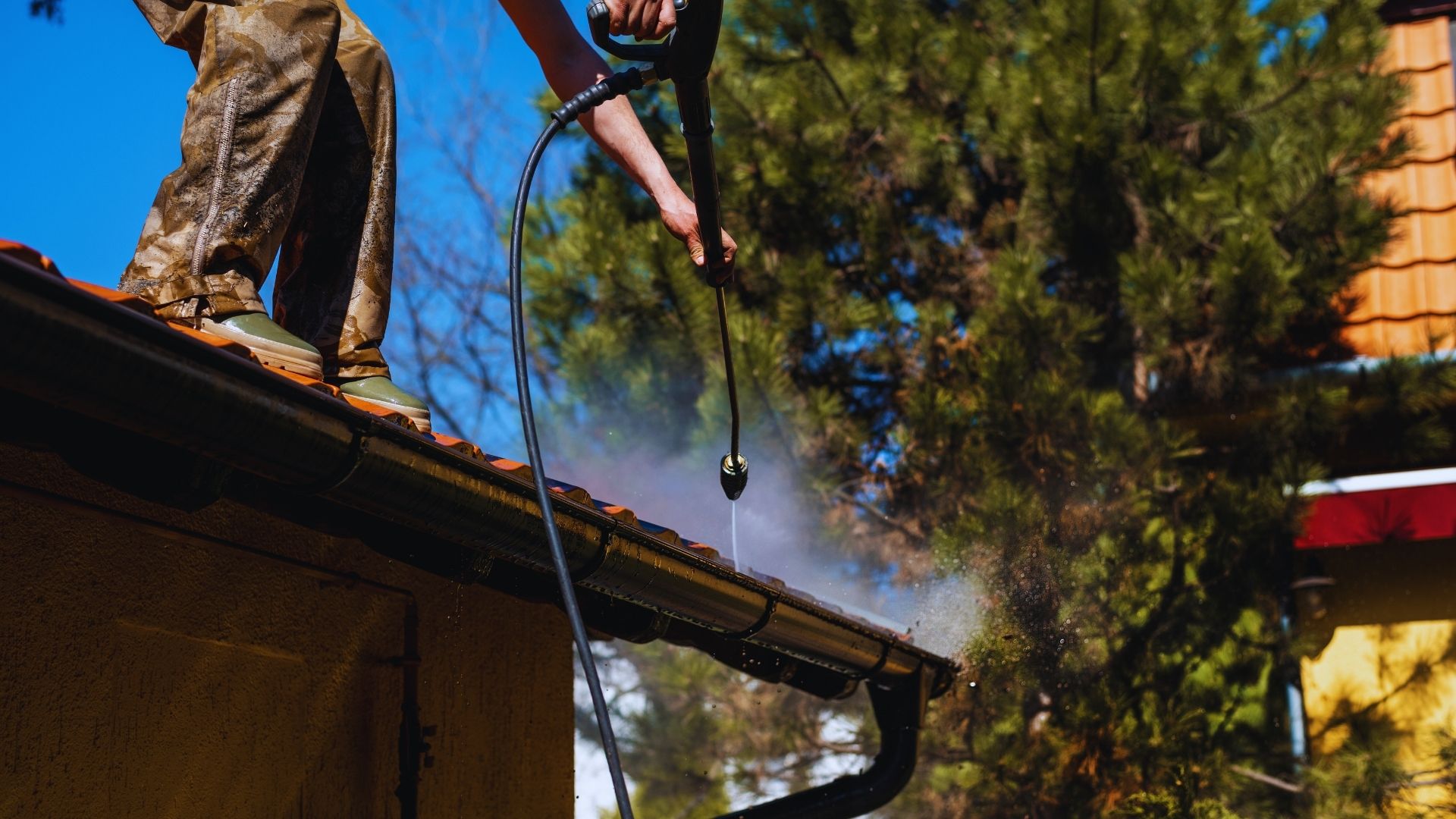You’re staring at your stucco siding thinking it looks like something from a horror movie, and you have no clue where to start. Maybe your neighbor commented about how “lived-in” your house looks, or perhaps you’re just tired of that grimy, discolored mess greeting you every time you pull into your driveway.
Learning how to clean stucco siding isn’t rocket science, but there’s a lot of bad advice floating around out there. I’ve seen people “clean” their stucco with pressure washers like they’re trying to strip paint off, only to end up with damaged walls and a bigger mess than they started.
Here’s the thing about stucco, it’s tougher than it looks, but more delicate than you’d think.
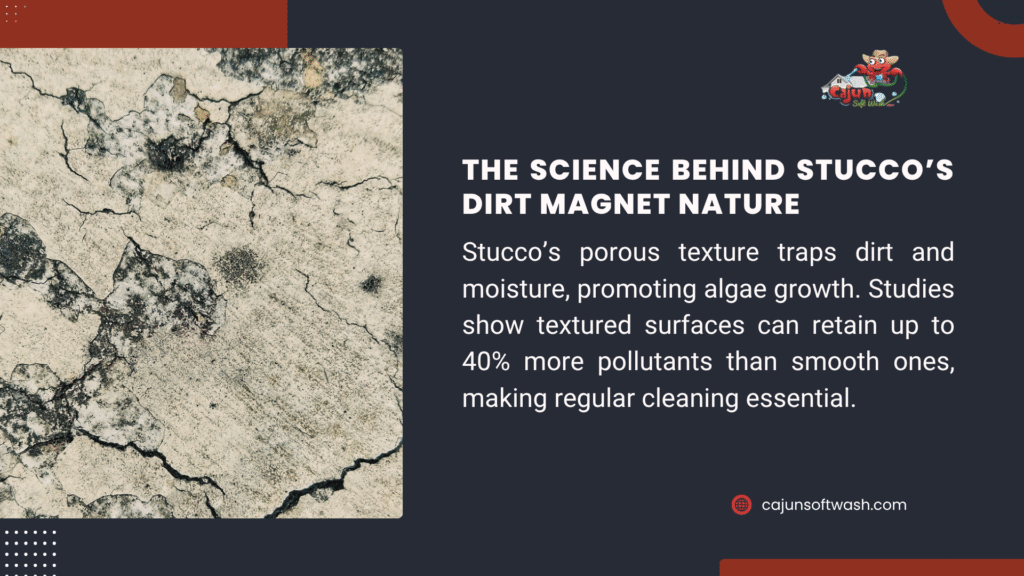
Why Your Stucco Gets So Gross in the First Place
Before we dive into how to clean stucco siding, let’s talk about why it gets dirty faster than other types of siding. That textured surface everyone loves is a dirt magnet. Every little groove and bump catches dust, pollen, spider webs, and whatever else is floating around in the air.
Add some moisture to the mix – from sprinklers, rain, or just humidity – and you’ve got yourself a perfect breeding ground for algae and mold.
The worst part is that regular house-washing techniques that work great on vinyl or brick can actually damage stucco.
What You Actually Need (Spoiler: It’s Not Much)
Forget about renting expensive equipment or buying specialized cleaners that cost more than your monthly coffee budget. Most of the time, you can clean your stucco with stuff you probably already have lying around.
Here’s my go-to setup: a regular garden hose, some dish soap, a soft scrub brush (not one of those wire brushes that’ll tear up your walls), and maybe some white vinegar if things get really nasty. That’s it.
Oh, and grab some old towels or drop cloths to protect your plants. Soapy water and your beautiful plants don’t mix well.
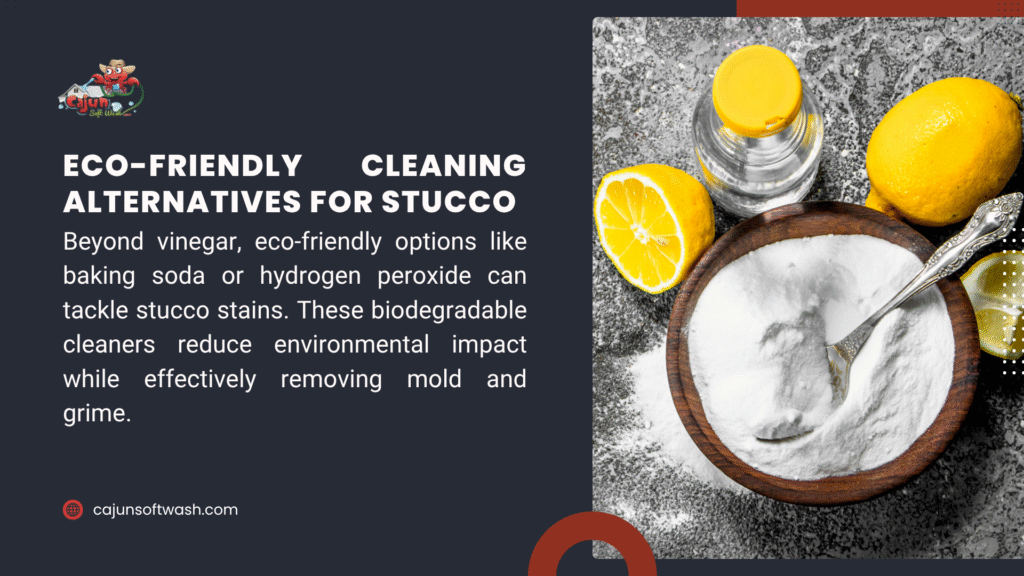
How to Clean Stucco Siding
Start from the top and work your way down. I know it seems obvious, but you’d be amazed how many people start at the bottom and then wonder why everything looks streaky.
Mix up some warm water with a squirt of dish soap. If you’re dealing with some serious grime or mold, cleaning stucco with vinegar works wonders. Just mix about one part vinegar to three parts water.
Spray or brush your cleaning solution onto a small section – maybe 10 square feet or so. Don’t try to do the whole wall at once unless you want to spend your entire Saturday re-cleaning sections where the soap dried before you could rinse it off.
Let the solution sit for a few minutes. I know you want to start scrubbing immediately, but give the cleaner time to do its job. Go grab a soda or check your phone – whatever keeps you from rushing this step.
Now comes the scrubbing part. Use that soft brush and work in circular motions, but don’t go crazy. You’re not trying to sand the stucco off the wall. Just enough pressure to lift the dirt and grime.
Rinse everything thoroughly with your hose. Any soap left behind will just attract more dirt, and you’ll be back out here again next month wondering why your stucco looks worse than before.
Dealing with Special Problems
There could be some special problems that arise from nowhere.
How to Clean White Stucco That’s Gone Gray
White stucco is beautiful when it’s clean, but when it’s dirty? It looks like the house gave up on life. The process for how to clean white stucco is basically the same, but you might need to be a bit more aggressive with your cleaning solution.
Sometimes, white stucco develops this overall grayish tint that makes the whole house look dingy. For this, you can try oxygen bleach.
Getting Rid of Mold and Mildew
If you’re wondering how to remove mold from stucco, the vinegar solution I mentioned earlier is your best friend. Mold loves stucco because it’s porous and holds moisture, especially in shaded areas or places where your sprinklers hit the walls.
The black or green spots you’re seeing? That’s mold, and it’s not just ugly – it can actually damage your stucco over time. Hit it with that vinegar solution and let it sit for at least 15 minutes before scrubbing. You might need to repeat this process a few times for really stubborn spots.
Indoor Stucco Challenges
Now, if you’re dealing with cleaning a stucco ceiling or interior stucco walls, that’s a whole different ballgame. You can’t just hose everything down inside your house (well, you could, but your family might not appreciate it).
For interior stucco, you can try dusting using a soft brush or even a vacuum with a brush attachment. If you need to actually wash it, use barely damp cloths and work in tiny sections. The key is using as little water as possible and making sure everything dries completely.
Tough Stains and What to Do About Them
Sometimes regular cleaning just doesn’t cut it. When you need to know how to remove stains from stucco, it depends on what you’re dealing with.
Rust stains from metal fixtures or sprinkler systems are probably the worst. You’ll need something with oxalic acid for those, but be super careful with this stuff. Wear gloves, don’t breathe it in, and test it somewhere inconspicuous first.
Paint splatters from that DIY project gone wrong? Sometimes you can scrape them off carefully with a plastic scraper. For bigger paint mishaps, you might need a paint stripper, but again, test it first.
Those white, chalky deposits that show up on newer stucco? That’s efflorescence, and it’s actually minerals from the stucco itself. Vinegar works great for this, too.
Here’s a quick reference for different stains:
| What’s Staining Your Stucco | How to Fix It | Watch Out For |
| Rust from sprinklers | Oxalic acid cleaner | This stuff is nasty – use protection |
| Paint drops | Scraping or paint stripper | Test first, some strippers damage stucco |
| White chalky stuff | Vinegar solution | This is normal on new stucco |
| Grease or oil stains | Dish soap and elbow grease | It might take several tries |
| Green algae or moss | Diluted bleach | Keep it away from plants |
Keeping Your Stucco Clean Longer
Here’s the thing nobody tells you – prevention is way easier than cleaning. Rinse your stucco walls every month or so with just plain water from your hose. It takes maybe 20 minutes and prevents that heavy buildup that turns cleaning into an all-day project.
Keep bushes and trees trimmed back from your walls. I know they look nice growing up against the house, but they trap moisture and create perfect conditions for mold and algae. Plus, they make it impossible to clean properly when you need to.
If you live somewhere with really harsh weather, consider having your stucco sealed every few years. It’s not cheap, but it makes cleaning so much easier and protects your investment.
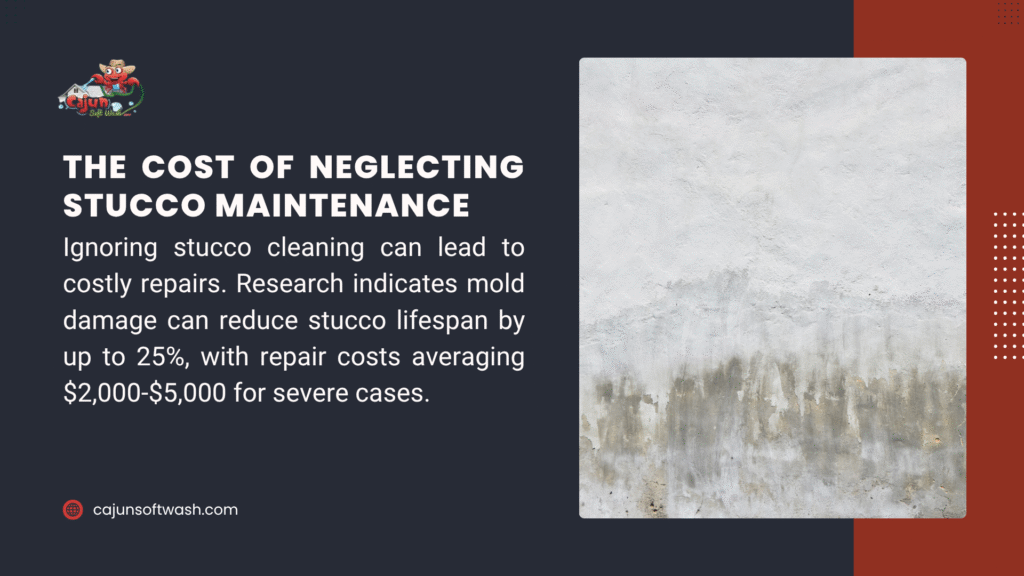
When to Throw in the Towel and Call Someone
Sometimes you need to admit defeat. If your stucco has serious mold problems, structural damage, or stains that are hard to clean, it’s time to call in professionals.
Professional cleaners have equipment and cleaning products. They also know how to spot problems before they turn into expensive repairs.
The team at Cajun SoftWash has been cleaning stucco for years, and they actually know what they’re doing (unlike your neighbor who thinks a pressure washer solves everything).
We know how to clean stucco siding without turning it into Swiss cheese, and we’ll get your house looking better than it has in years. Stop wasting your weekends and let someone who knows what they’re doing handle it.



